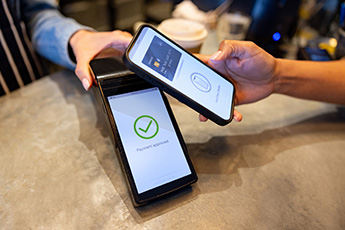“Leave it to Beaver” may not have broken into the top 30 most popular TV shows during its six-season run, but the show, which highlighted everyday happenings in family life, gained a major following in reruns and airs to this day. In one 1957 episode, 7-year-old Beaver is given $1.75 and sent to town to get himself a haircut. But after losing the money on his way to the barber, he is afraid to tell his parents and tries to cover up his loss by cutting his own hair — a disastrous decision.The world has changed significantly in the 67 years since “Leave it to Beaver” first aired, yet there are still plenty of instances where parents must entrust children with physical money to pay for things on their own. In an increasingly cashless society, giving kids the independence to pay for things themselves is becoming difficult. As parents look for ways to bridge this gap, it creates a multi-billion-dollar opportunity for organizations that can equip kids with the ability to make electronic payments of their own — one that community financial institutions (CFIs) and their small business customers should not ignore. Generation Alpha’s Influence For most people, cashless transactions are no big deal. For children, however, the inability to pay with cash can be extremely problematic — for both them and the cashless businesses that lose this potential revenue stream. Even though Common Sense Media found that, as of 2021, roughly half of US children receive their first smartphone by the age of 11, most financial institutions do not allow kids to have their own debit card — even when linked to a parent’s account — until age 13. This disconnect has not been lost on fintechs, a handful of which have created apps catered to providing parent-controlled debit cards and apps for youth. Given the buying power of this demographic — known as Gen Alpha — let alone future projections, it is no surprise that fintechs are eagerly catering to them. These offerings also help fintechs entice more cashless business customers to work with them, given that they’ve provided an avenue for younger customers to engage with their cashless-based products and services.The size of Generation Alpha, which comprises children born between 2010 and those yet to be born in 2025, is expected to eclipse the size of Baby Boomers and will total roughly 2B by the end of 2025. This group already represents an estimated $140B in direct and indirect spending, as well as an additional $300B of spending through parental influence. Their spending power is only going to increase. Generation Alpha’s spending is expected to surpass Millennials’ spending by the late 2020s, and to exceed all other generations by 2034. Since many financial institutions don’t offer digital payment options for children under 13, CFIs should take advantage of this opportunity and cement ties with this demographic now. This can be achieved most effectively by offering digital payment options for children, facilitated through their parents.Bringing Digital Payments to Generation AlphaCreating digital payment offerings and apps that will resonate with Generation Alpha and their parents requires an understanding of what makes this generation unique, particularly that its members are the first digital natives. Apps and card providers that have successfully catered to young children so far include GoHenry, FamZoo, and Greenlight, all of which charge monthly subscription fees for their services. One of the few financial institutions to target this space so far is Chase, whose Chase First Banking debit card is available for children as young as 6 and can be managed by parents. CFIs interested in using digital payments as a way to target the business of Generation Alpha, strengthen ties to their parents, and provide more revenue opportunities for cashless business customers, should keep the following in mind when designing digital payment apps or debit cards for this demographic:
- Include education opportunities. The parents of Generation Alpha have a strong interest in financial education for their children. Factoring educational aspects regarding financial and banking concepts into digital payment apps and debit card offerings will enhance their appeal.
- Provide purchase transparency. Visibility is key. Parents want the ability to see what their children are spending and where they are spending it in real time. Tracking such information can also provide useful insights for CFIs.
- Market it on social media. Generation Alpha members are avid consumers of digital content and spend over 65% more time on mobile devices than Millennials did at the same age. Any product offered by your organization should be actively marketed across social media platforms and popular apps such as YouTube. Another marketing tactic to consider is working with influencers; Gen Alpha kids are major consumers of social media and give a lot of credence to the content generated by influencers.
- Incorporate gamification elements. Online gaming is a major interest of Gen Alpha. So, following the lead of apps that have incorporated gamification into money apps for kids is a good idea for things such as allowing parents to set up goals and tasks their kids must first complete before they will receive money.
- Provide customization. Individuality is important to kids, so offering the ability for customization — whether that’s the chance to design the look of a physical debit card or personalized avatars — will make them more appealing.
As digital payments become increasingly popular and more stores go cashless, the need for digital payment options for young children will continue to increase. Catering to this group is a multi-billion-dollar opportunity for CFIs that will only get bigger. With few financial institutions having created payment apps or debit cards for children under 13 and only a limited number of fintechs with such offerings so far, there is tremendous room for growth for CFIs.




